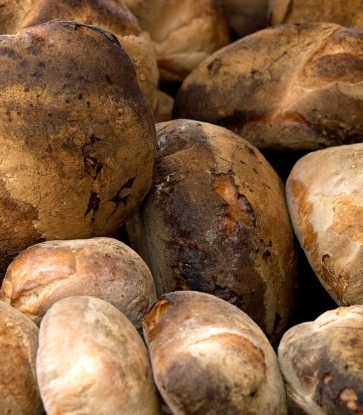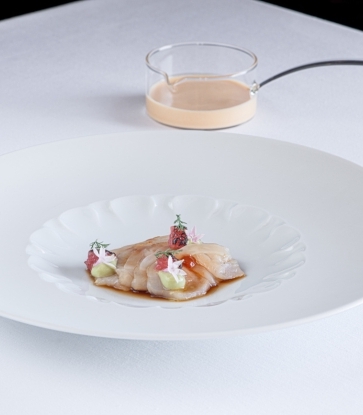Inhabited by Neolithic settlers as early as 5000 BCE and home of megalithic temples that rank amongst the earliest free-standing stone buildings in the world, the islands would eventually be colonised by some of the most powerful rulers of their time. The archipelago and its people gradually absorbed a myriad of contrasting influences and selectively moulded them into a personality that still matures to this very day.
Undoubtedly one of their most important cultural heirlooms came from the Phoenicians as they sailed through the Mediterranean, eventually settling here until the Romans thought otherwise. The earliest evidence of winemaking on the archipelago is found on Gozo, dating back to Punic times some 3000 years ago. Despite having such an early start, the wine path of the Maltese islands would be far from easy as ruler after ruler would complicate the trajectory of its development and often even bring it to the edge of extinction.

Following six centuries of affluent Roman influence came two hundred years of Arab rule, when the importance of wine dwindled down to a trickle, kept alive by local farmers for their own home use. Other occupiers tossed the fortunes of wine production around until the arrival of the Order of the Knights of St John in 1530. Of deep European roots, the Knights were keen wine-lovers themselves enjoying some of the finest wines in the world at the time and would ship copious amounts of it from the mainland for them to indulge in. As the culture of wine appreciation consequently evolved to new heights, consumption of locally produced wines was sidelined and neglected, once again relying on the limited consumption by locals and use in religious ritual for survival. Local vine growers and wine makers faced a very stiff challenge of having to compete with some of the richest and advanced regions in the world and with far less experience and resources, a market factor which was destined to last well into the islands’ history.
The wine lists explored by the Order of the Knights of St John showed the likes of Chablis, Champagne, Brunello di Montalcino, Puligny Montrachet and several other wine wonders of the world then and now. Their tastes were also already accustomed to wines coming even from outside of Europe, and as early as the late 18th Century, Steen wine from Constantia, an affluent suburb of Cape Town, South Africa had already reached the shores and fine dining tables of Malta’s nobility. For the sake of context, that would be just about 95 years after the Chenin Blanc grape variety had found its adoptive home in the new continent and when the first wineries in the area started being set up.
The British took over the ruling of the islands in 1814 which resulted in more adverse changes and general apathy towards agriculture that brought more challenges to the already frail winemaking industry of the time. This era ushered in a period of political turbulence in between two World Wars during which the concerns of local inhabitants focused on shelter and survival rather than on producing fine wine.
As Malta gained its independence in 1964 and became a republic ten years later, the island and its people strived to carve out a space for themselves in a world of powers, motivated by newfound freedom which itself exposed a fledgling fragility. The wine-making industry sailed through, severely battered, and bearing ripped canvas, yet afloat, nonetheless.

As the country relied on two grape varieties which would eventually be certified as indigenous, the Maltese did their best to produce wine from their red Gellewza and white Girgentina to try to fend off competition from imported wines made from noble varieties like Chardonnay, Cabernet Sauvignon, Merlot, Sauvignon Blanc and so many others which were writing wine headlines at the time. The nature and character of our two main varietals show a youthful softness that was not necessarily in line with contemporary wine-drinking taste and trends which consistently favoured fuller and more powerful flavours, a factor further compounded by outdated viticultural and oenological practices adopted locally, much the result of long periods of strife and uncertainty already outlined.
Once again, it was down to the hardy people of Malta and Gozo to find ways to navigate choppy waters guided only be a Wine Act dating 1969 and maximising on a levy set on the importation of wines with the aim of offering support to local produce which sought to offset some of the prevalent adverse currents which continued to pound our wines.
With Malta’s accession to the European Union in 2004, any form of market protection was removed, replaced by farming subsidies aimed at supplementing viticulture. Bereft of such levies, the islands’ wine industry found itself exposed to a heavy influx of wines from all over the world whose economies of scale strongly abetted their competitiveness once again penalising the relatively insignificant size of Malta’s territory. Nevertheless, winemakers in Malta and Gozo took this on the chin and set about in their preparation for the next challenge which would, however, also bear fruits in terms of highly improved quality regulations and measures placing their wines on equal regulatory status as those from the highly revered regions of Europe. DOK regulations were introduced in 2007, heralding renewed belief as resilient wine makers paved the way to new ones fostering space for a rich myriad of fine wines made from all international noble varieties which can thrive in the much-desired Mediterranean climatic profile as well as the islands’ own indigenous varieties.

Today, Malta and Gozo boast of around a dozen wineries, two of which were set up over 100 years ago, one owned by none other than Antinori, four others established in the smaller island whose surface area covers a mere 67m², a handful of wine estates producing a few thousand bottles annually and a total yearly production of just over 1.5 million bottles.
These volumes allow for only very limited export, which means only one thing. Whoever wishes to discover more about the wines of Malta and Gozo needs to physically visit this wonderfully sun-blessed archipelago right at the very heart of the Mediterranean Sea. Hardly a bad deal, is it?












